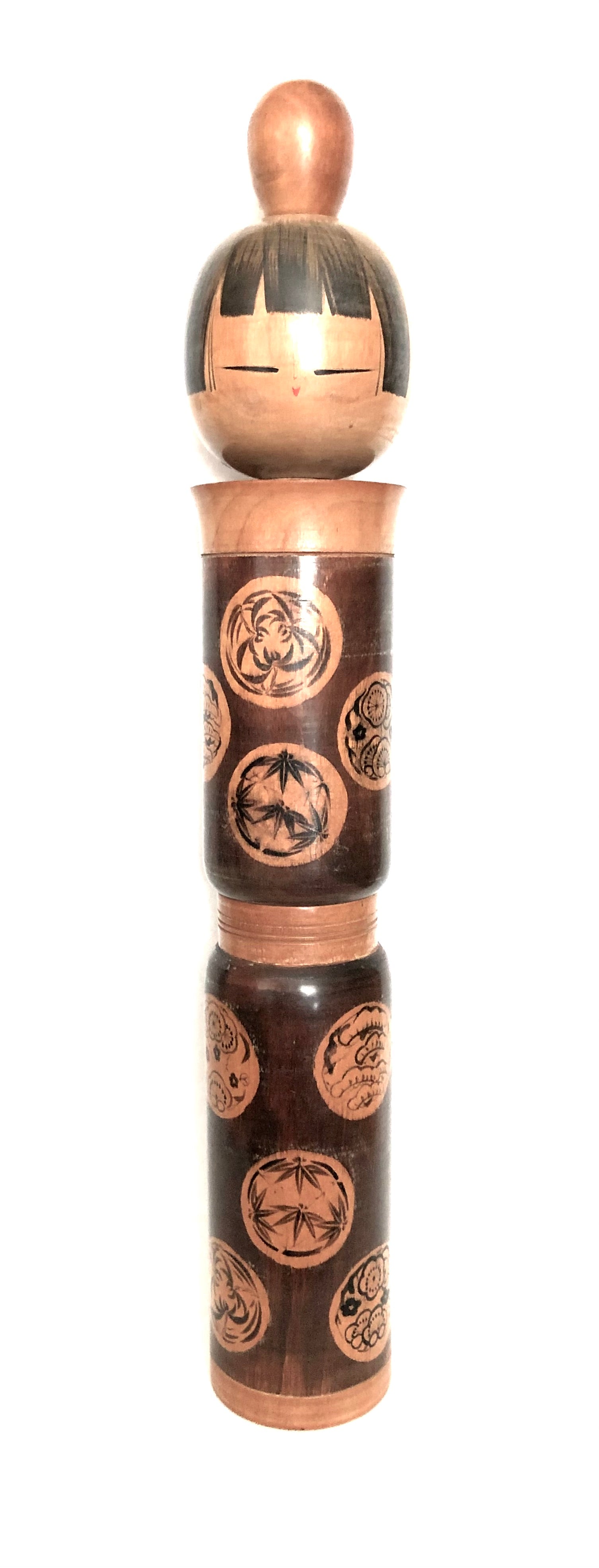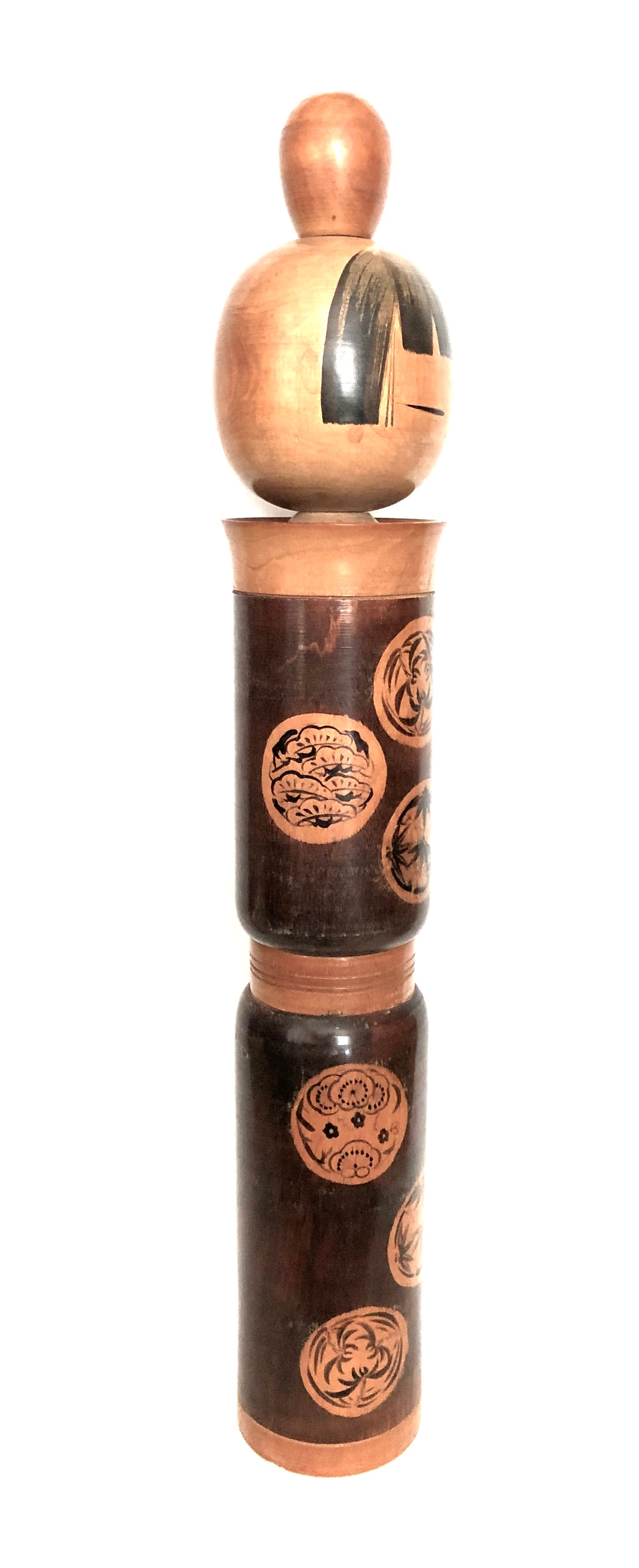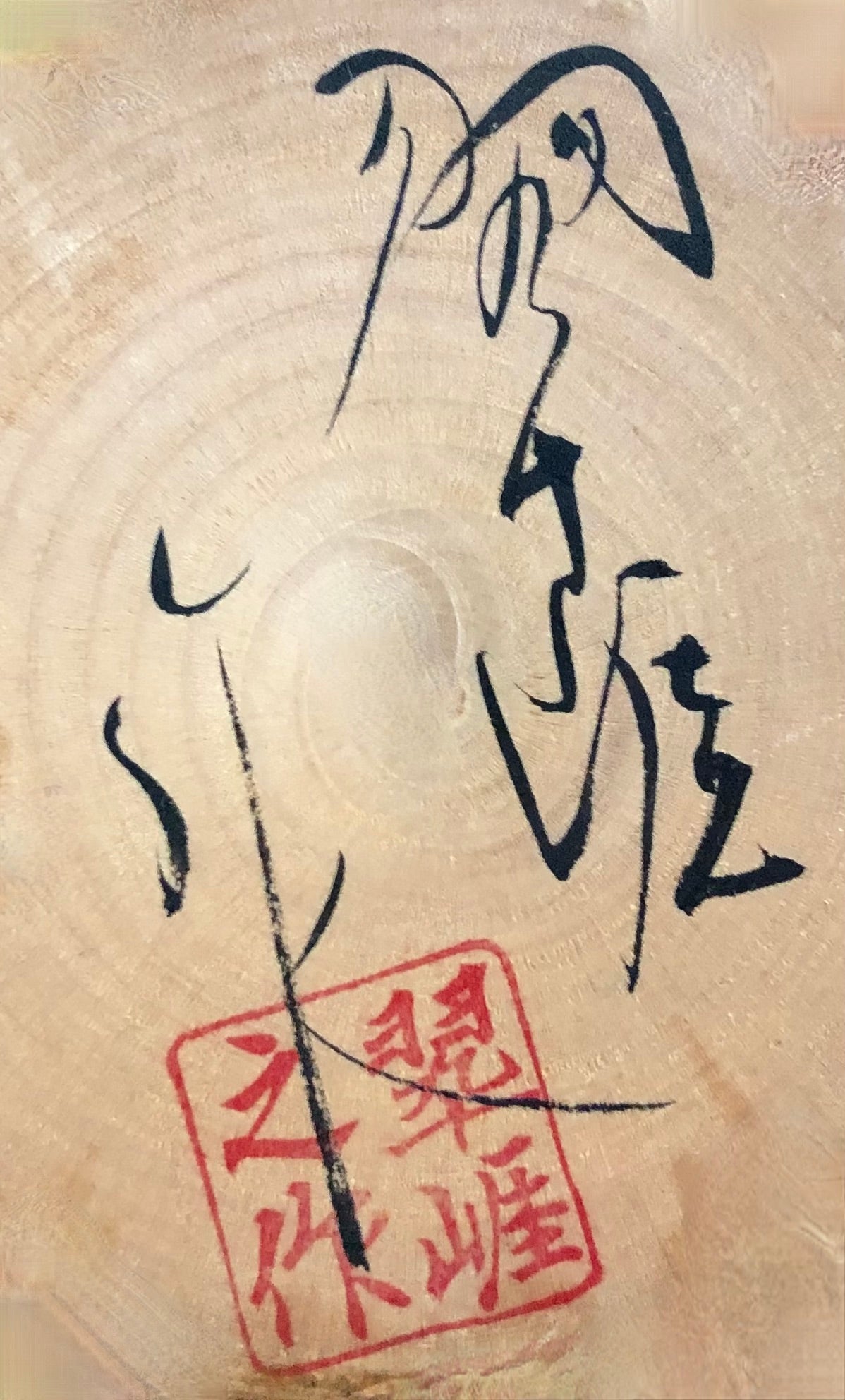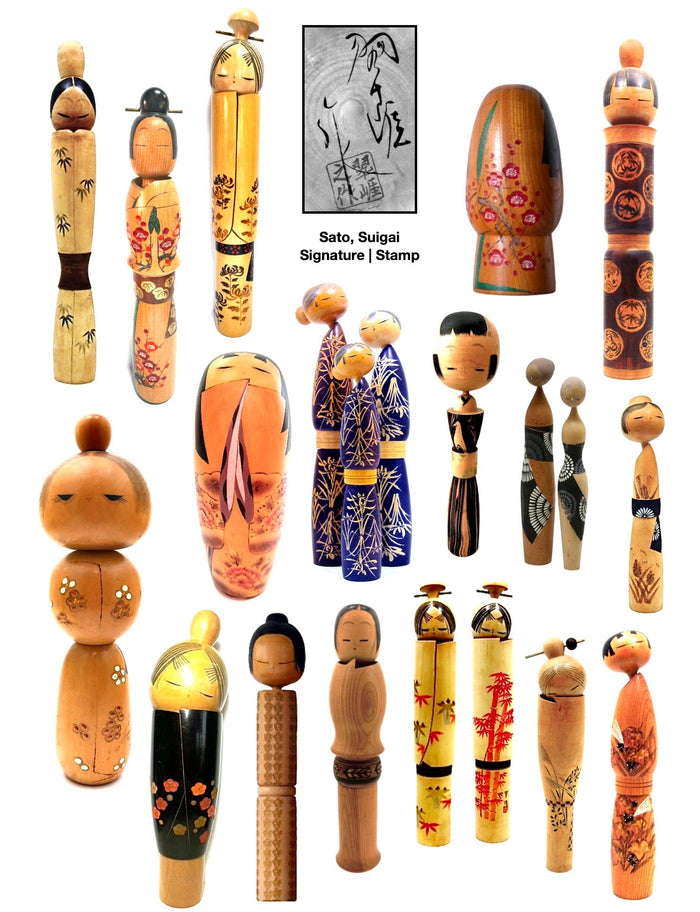


Vintage Sosaku Kokeshi entitled: “Sho-chiku-bai | Three Friends of Winter” by Sato, Sugai (1920-)
Dimensions: 23-0”h
Sato-san, at the age of 18, began his professional career as a painter under the famous artist Komuro, Suiun, before pursuing a career in creative Kokeshi making in 1948. His Kokeshi dolls have won many awards, including the Prime Minister’s Award in 1966. Sato-san’s artistry has been recognized by Japan’s Imperial Family, Crown Prince Akihito, (Now Emperor Akihito).
The ‘mon” incorporated into this Kokeshi are based on what was referred to as the “three Friends of Winter” which take their design from elements in nature that symbolize ago-old Japanese traditions and beliefs. Many of these characteristics were adopted by the samurai and their clans on clothing in the 1920s and were favorite subjects of auspicious stories, arts, and rituals and have had a profound connection to the Japanese way of life.
This large two-section Kokeshi shows a diversity of ‘Mon’, which originated as currency appearing on coins during the Meiji period, and then fabric patterns to be used on clothing, to distinguish individuals, or signify membership in a specific clan. The reference to Tsukikage is based on the circular images of the ‘Mon’, (Kamon and Mondokoro), which decorate the body of this doll. The doll is turned from one piece of wood, accenting a delicate lip on the top of the Kimono, and an obi that accentuates the waist. Because of its size, the doll was made in two separate sections that are joined with a dowel to aid in carrying the doll to other parts of Japan. The face is serene, with a large ‘Mage’ hair effect, bangs, and side hair fringes. The doll is signed and has a red impression stamp of the artist.
The piece was published in the 2022 publication of Sosaku Kokeshi: Celebrating the Major Artists of the Creative Movement. For more information on this artist go to the following link: https://mingeiarts.com/collections/artisan-woodworker-sato-suigai-1920
Condition: Excellent lathe turning, painting, and size, for it is outstandingly excellent, impressive, and beautiful detailing. No chips, cracks, breaks, missing pieces, or restoration, it is very stable and retains its original details and finishes. The piece meets all the standards of the vintage collectible Sosaku Kokeshi by Sato, Sugai.

Artisan
Woodworker: Sato, Suigai
1920-
Biographical History:
Sato-san, named Sadahachi, was born in Okubo, Yoshioka Village, Gunma Prefecture, to a family who owned a silk trading business. At the age of 18, he began his professional career as a painter under the famous artist Komuro, Suiun, before pursuing a career in creative Kokeshi making in 1946. Sato-san also pursued careers in fashion design, engineering, and mechanics. In 1970, he was recognized for his wood crafting skills and named Holder of Excellent Technique. His Kokeshi dolls have won many awards, including the Prime Minister’s Award in 1966. In 1970, Sato-san’s artistry was recognized by Japan’s Imperial Family, Crown Prince Akihito, (Now Emperor Akihito), the Minister of Economy and Trade, and the Minister of Agriculture and Forestry. He is a member of the Cultural Properties Protections Committee of Hakone.
Collector's note – descriptive qualities, standard characteristics & ornamentation styles:
What is unique to this artist’s dolls is the unusual but traditional hairstyle, the wheat, summer grass, bamboo, (symbolizing prosperity, purity, and innocence), plum blossoms, and abstract leaves. In many instances, he utilizes an uncolored wood obi on both plain and vividly colored Kimono. He additionally incorporated ‘Stilt grass’, which is most commonly found in moist areas of wetlands. He also enjoyed representing ‘Kyoho budo’, (giant mountain grapes). Occasionally he incorporated pine, plum, and bamboo, referred to as “sho-chiku-bai”. Sato-san created many wonderful simple forms. Sato-san also created several large forms decorated with the family crests, (Mon) that are very tall, made in two separate sections from the same piece of wood, and joined with a connecting dowel. He regularly captures a peaceful nature in his doll's faces, complementing the serene nature that fills the countryside.
